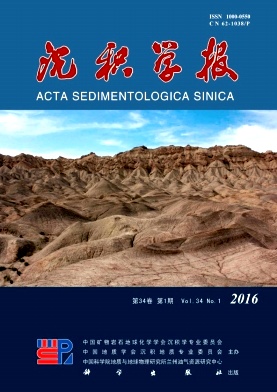Sedimentary Characteristics and Lithofacies Palaeogeography during Longwangmiao Period of Early Cambrian, Sichuan Bain
doi: 10.14027/j.cnki.cjxb.2016.01.003
- Received Date: 2015-01-19
- Rev Recd Date: 2015-03-25
- Publish Date: 2016-02-10
-
Key words:
- grain shoal /
- palaeouplift /
- land-tied carbonate platform /
- platform margin /
- depositional model /
- palaeogeographic pattern
Abstract: In order to improve the understanding on the sedimentary characteristics and lithofacies palaeogeography in the Lower Cambrian Longwangmiao Formation of the Sichuan Basin and its adjacent regions, a relative comprehensive analysis on the boreholes and outcrops data were performed. Particularly, by examining the regional geological settings and the thickness distribution pattern within Longwangmiao Fromation, this paper found that the Sichuan Basin and its adjacent areas are bordered by Motianling Micro-oldland and Hannan Oldland in the north, Kangdian Oldland in the west. In the southeast and northeast regions within the study area, were embraced by underwater palaeouplift named Weixin-Qianjiang, Shiqian-Xiushan-Longshan and Zhenba-Wuxi-Badong respectively. Within the present basin, Central Sichuan palaeouplift, and depressins of Langzhong-Tongjiang, Jiangjin-Fengjie constitute of the palaeogeographic pattern of "one uplift and two depressions", while in the south an inherited depression region named "Luzhou-Junlian-Zhaotong" still existed. To the northeast and southwest corner, Qinling ocean and Jiangnan Basin are connected. Strikingly impacted by the palaeogeographic pattern, a land-tied carbonate platform was found to cover the main body of the Sichuan Basin within the platform-ramp-basin sedimentary system, which may further be divided into mixed tidal flat, restricted to evaporate platform, semi-restricted to restricted platform and platform margin. Furtherly, by analyzing the terrigenous clasts content and its direction, the content distribution pattern of limestone, dolostone and gyprock elucidating the waters localization and the relative locations of the platform margin, and the grain-shoal content, it clarifies the distribution pattern of the lithofacies paleogeography during Longwangmiao period, establishing the sedimentary model successively. The results indicate that, the open ocean side of the flat tidal, underwater palaeouplift and the periphery areas of Luzhou-Junlian-Zhaotong are preferable zones for grain shoal development. The filling and joining during the early stage of early Cambrian results in a unified palaeouplift in Leshan and Ziyang, while the north-south staphrogenic Trough in Tongzi-Junlian during the end of Ediacaran and Early Cambrian turned into the Luzhou-Junlian-Zhaotong depression within the platform. Two depression zones in the south have been verified by drilling holes of Well Dengtan 1 and Well Taihe 1. The results may help to guide and broaden the exploration field of karstificated grain-shoal reservoir study.
| Citation: | MA Teng, TAN XiuCheng, LI Ling, ZENG Wei, JIN MinDong, LUO Bing, HONG HaiTao, HU Ping. Sedimentary Characteristics and Lithofacies Palaeogeography during Longwangmiao Period of Early Cambrian, Sichuan Bain[J]. Acta Sedimentologica Sinica, 2016, 34(1): 33-48. doi: 10.14027/j.cnki.cjxb.2016.01.003 |






 DownLoad:
DownLoad: